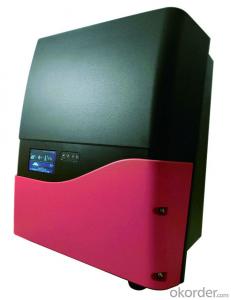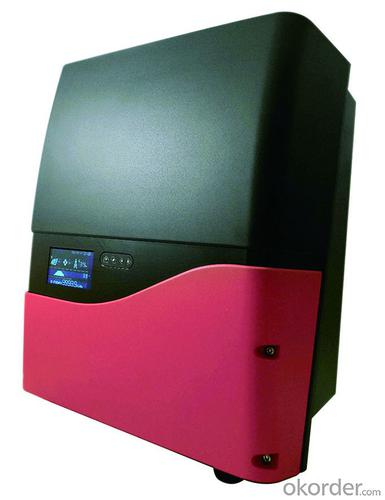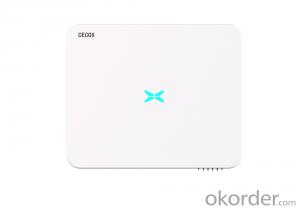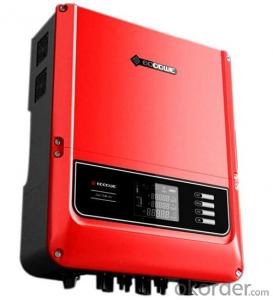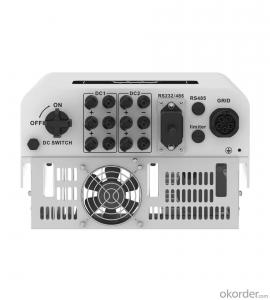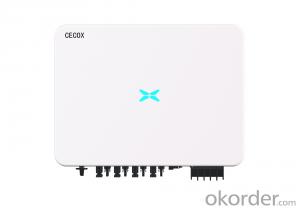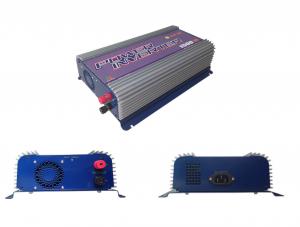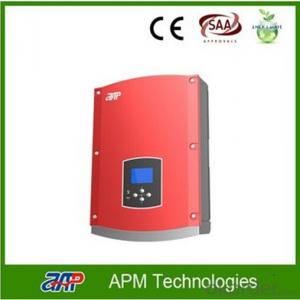Plug in Solar Inverter for Three Phase On-Grid PV-15000T-U
- Loading Port:
- China main port
- Payment Terms:
- TT OR LC
- Min Order Qty:
- 1 pc
- Supply Capability:
- 75000 pc/month
OKorder Service Pledge
Quality Product, Order Online Tracking, Timely Delivery
OKorder Financial Service
Credit Rating, Credit Services, Credit Purchasing
You Might Also Like
Specification
Output Power:
15,000W
Inveter Efficiency:
98.1(MAX)
Output Voltage(V):
380
Input Voltage(V):
500
Output Current(A):
24A(MAX)
Output Frequency:
50Hz

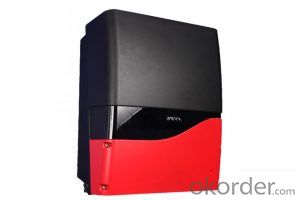
Features
VDE-AR-N 4105 & VDE 0126-1-1/A1 & PEA & MEA Certificate
Max & Euro Efficiency:98.3% / 98.1%
Durable & Light Weight Design
Integrated DC Switch, Data Logger, Web Server
RCR ( Ripple Control Receiver, German model )
Ethernet and Optional Wi-Fi
Die-Cast Enclosure
Cloud Web Portal
Optimized for 6” Solar Cell Module
Made In TAIWAN
Item Scale PV-15000T-U Input (DC) MPPT Working Range V 180~980 Max. Current A 20A/10A Max. Short Circuit Current (Isc) A 28A/14A MPP Tracker No. 2 Output (AC) Nominal Power W 15000 Nominal Voltage/ Frequency V 380V/50HZ Max. Current A 24 Efficiency Max. Efficiency % 98.1 General Protection IP65 Humidity % 0~100 Cooling Forced Air-cooling Features Display Icon Graphic Display(Optional) RS485 Standard, Half-duplex Wi-Fi Optional Data Logging Optional Mechanical Dimension(W x H x D) mm 418*485*190 Weight kg 27 Input Pairs 3 DC Switch Optional Certification & Regulation Grid Monitoring VDE 0126/-1-1/A1, VDE-AR-N 4105, AS/NZS 4777.2, AS/NZS 477.3, PEA,NB/T32004 Safety IEC 62109-1, IEC 62109-2 Remarks:
The range of output voltage and frequency may vary depending upon different grid codes.
Specifications are subject to change without advance notice.
- Q: What are the common maintenance requirements for a solar inverter?
- Common maintenance requirements for a solar inverter typically include regular cleaning to remove dust and debris, checking and tightening electrical connections, inspecting for any signs of damage or wear, monitoring performance and output, and updating software or firmware as needed. Additionally, it is important to follow the manufacturer's guidelines and recommendations for maintenance to ensure optimal functionality and longevity of the solar inverter.
- Q: Can a solar inverter be used in areas with high humidity and salt air exposure?
- Yes, a solar inverter can be used in areas with high humidity and salt air exposure. However, it is important to choose a solar inverter that is specifically designed for such conditions, as these factors can potentially impact the performance and lifespan of the inverter. It is advisable to consult with a professional to ensure the selection of a suitable solar inverter for areas with high humidity and salt air exposure.
- Q: What is the role of a solar inverter in a utility-scale system?
- The role of a solar inverter in a utility-scale system is to convert the direct current (DC) electricity produced by the solar panels into alternating current (AC) electricity that can be fed into the utility grid. It also ensures the maximum power output of the solar panels by tracking the maximum power point. Additionally, the inverter provides grid synchronization and protection functions to ensure the safe and efficient operation of the utility-scale solar system.
- Q: How does a solar inverter impact the payback period of a solar system?
- A solar inverter can have a significant impact on the payback period of a solar system. The efficiency and reliability of a solar inverter can affect the overall energy production and performance of the solar system. A high-quality inverter can optimize the conversion of solar energy into usable electricity, maximizing the system's output and reducing energy losses. This improved efficiency can shorten the payback period by increasing the amount of electricity generated and therefore the savings on utility bills. Additionally, a reliable inverter can minimize maintenance and replacement costs, further enhancing the financial returns of the solar investment.
- Q: How do you connect solar panels to a solar inverter?
- To connect solar panels to a solar inverter, you need to follow a few steps. First, ensure that both the solar panels and the inverter are turned off. Then, connect the positive terminal of the solar panel to the positive terminal of the inverter using a DC cable. Similarly, connect the negative terminal of the solar panel to the negative terminal of the inverter. Make sure the connections are secure and tight. Finally, turn on the solar panels and the inverter, and you should have a successful connection between the two.
- Q: What is the importance of insulation resistance measurement in a solar inverter?
- Insulation resistance measurement in a solar inverter is crucial as it helps ensure the safety and efficiency of the electrical system. By measuring the insulation resistance, any potential faults or deteriorations in the insulation can be detected, preventing electrical leakage or short circuits. This measurement also helps identify any insulation breakdowns that may compromise the performance and reliability of the solar inverter. Ultimately, insulation resistance measurement is essential for maintaining the integrity of the solar inverter and ensuring the safety of both the electrical system and the people using it.
- Q: Can a solar inverter be used in systems with different module tilts?
- Yes, a solar inverter can be used in systems with different module tilts. Solar inverters are designed to convert the DC power generated by solar modules into AC power that can be used in electrical systems. They are typically compatible with a wide range of module tilts and orientations. However, it is important to ensure that the inverter is properly configured to match the specific tilt angles of the solar modules for optimal performance and maximum energy generation.
- Q: Can a solar inverter be used with solar-powered telecommunications systems?
- Yes, a solar inverter can be used with solar-powered telecommunications systems. Solar inverters are devices that convert the direct current (DC) generated by solar panels into alternating current (AC) that can be used to power various electrical devices, including telecommunications systems. By using a solar inverter, the solar energy captured by the panels can be efficiently utilized to power the telecommunications equipment, making it a suitable and environmentally-friendly solution.
- Q: What is the role of a solar inverter in a solar-powered electric fence?
- The role of a solar inverter in a solar-powered electric fence is to convert the direct current (DC) electricity produced by the solar panels into alternating current (AC) electricity, which is required to power the electric fence. The solar inverter also regulates and stabilizes the voltage and frequency of the electricity to ensure proper functioning of the electric fence system.
- Q: What is the role of a solar inverter in preventing overloading?
- The role of a solar inverter in preventing overloading is to regulate the flow of electricity from the solar panels to the grid or the connected load. It continuously monitors the power output of the solar panels and adjusts the voltage and frequency to match the requirements of the load. By doing so, it ensures that the system does not exceed its capacity, preventing overloading and potential damage to the equipment.
Send your message to us
Plug in Solar Inverter for Three Phase On-Grid PV-15000T-U
- Loading Port:
- China main port
- Payment Terms:
- TT OR LC
- Min Order Qty:
- 1 pc
- Supply Capability:
- 75000 pc/month
OKorder Service Pledge
Quality Product, Order Online Tracking, Timely Delivery
OKorder Financial Service
Credit Rating, Credit Services, Credit Purchasing
Similar products
Hot products
Hot Searches
Related keywords
